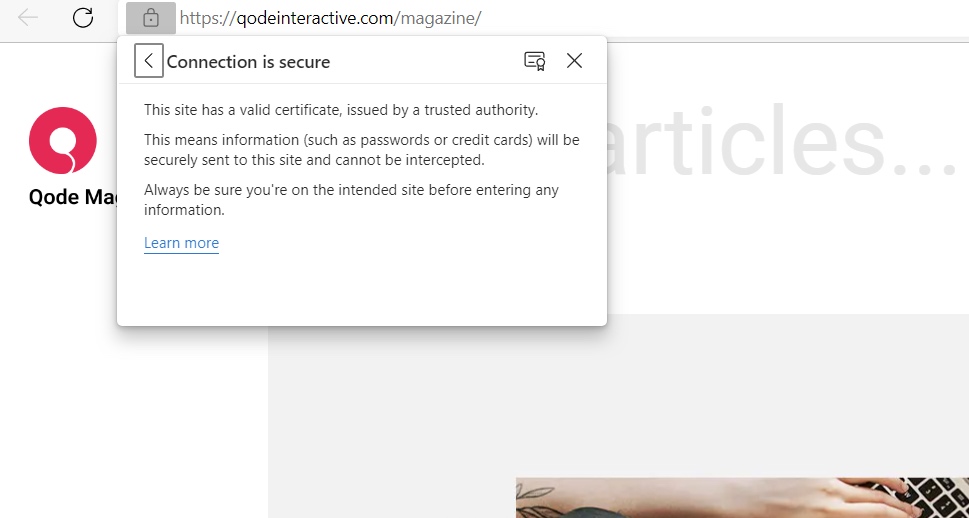HTTP vs HTTPS: Everything You Need to Know

The question of your website’s security should always be on your mind, whether you like it or not. Even if you have a website that seems small and inconsequential – nothing to be targeted by hackers – it can still be hacked and used to attack someone else. Security matters a lot when you’re online and since your website is always online, well, it’s always a potential target. If you have a WordPress website, there’s a whole checklist of security things you could be doing to improve security, with lesser known but equally important methods such as using HTTP security headers on top of it. But to get there, you need to cover the basics, and to that, you need to be clear on the HTTP vs HTTPS dilemma.
To be perfectly honest, the verdict that HTTPS is the superior choice has been in for a while now. Even in case your website doesn’t technically need it, the fact that browsers treat HTTP and HTTPS addresses differently should nudge you in the direction of HTTPS. Still, it’s good to always ask questions, and we’ll try to answer the most important ones in this article. You’ll learn:

Hypertext Transfer Protocol, or HTTP, is one of the protocols that enable the internet as we know it today to exist. Whenever you use a web browser to access a page on your favorite website – or whenever a visitor tries to access a page on your website – HTTP is used to facilitate the exchange of data that leads to a page being displayed in the browser. It tells a browser and a server how to talk to each other.
It’s not the only protocol involved in the exchange, as it works on top of the Transmission Control Protocol (TCP) which itself works in conjunction with the Internet Protocol (IP). Each of these protocols plays a different role – TCP, for example, makes sure that information packets are transferred reliably, while IP helps with routing and addressing the packets.
Each works in its own layer, too. TCP is a transport layer protocol, while IP is a network layer protocol. These layers have their own numbers, too – the transport layer is layer 4, while the network layer is layer 3. The layer to which HTTP belongs, the application layer, is layer 7.
HTTP is a client-server protocol. The communication within the protocol starts when the client – a web browser – initiates it. The client will send messages, which are called requests, containing the request line, which detail which information it wants to fetch from the server, and request headers, which provide further instructions on the request. The server will then respond with a message called a response, which contains a status line, response headers, and the information requested by the client.

One of the key traits of HTTP is that it’s simple. Really simple. So simple that you can read it and understand it. HTTP was built that way because it makes it much easier for developers to work with it, on top of making it more accessible in general. Even the new updates on the original HTTP protocol have kept the same level of simplicity.
Unfortunately, though, this also means that if someone were to get a hold of the messages exchanged using HTTP, they too would be able to read and understand them. A special kind of software called packet analyzers, or packet sniffers, can do just that. While they certainly have legitimate uses in network management, they also tend to be used by hackers who want to capture the packets and extract any valuable information from them. That’s why you don’t send credit card numbers over HTTP. You do it over HTTPS.
Hypertext Transfer Protocol Secure is the appropriately named secure version of the Hypertext Transfer Protocol. When it was first implemented, it added another protocol – the Secure Sockets Layer, or SSL – to the communication protocols bundle with the sole purpose to encrypt the communication. That way, even if someone would get their hands on a package, they wouldn’t be able to read it – only the server and the client would have the key to decrypt the information and make it readable.
Today, SSL is no longer in use, as it was allowed to retire after being succeeded by another encryption protocol called Transport Layer Security. We still use the initialism SSL because the world just kind of got used to it. But the important thing is that it’s possible to have the connection between a client and a server encrypted, and when it is we call that HTTPS.

So if HTTP is everywhere but it’s not secure, and HTTPS is an improvement on it in terms of security, why would someone decide not to use HTTPS? There is no reason at all. The web is moving towards HTTPS as the new standard, if it’s not there already, and most of the kinks have been worked out from it so that the barrier to adoption is almost non-existent.
Thanks to the different kinds of SSL certificates, you can choose an SSL certificate that fits your exact needs. You won’t be overburdened by having to pay for something that’ll be overkill for your website. You won’t need to pay at all – you can add a free SSL certificate to your website. It’s easy if you use WordPress, too – you know there’ll be SSL plugins to make the whole installation process a breeze. If you want to be thorough, however, you can also choose the manual SSL installation method.
It’s possible that your website simply doesn’t need a security certificate, as you don’t handle any sensitive or valuable data. Even if that were the case, you would still want to install an SSL certificate on your website. Web browsers now standardly display the type of connection in the address bar. Having the words “not secure” or an equivalent symbol appear next to your website’s address is a bad look, even if you only have a portfolio website that doesn’t ask its visitors to leave any important information.
Let’s Wrap It Up!
You should be happy to know that, even though the internet is a place that’s full of dark corners where trouble looms, there are constant efforts to make it safer and more secure. The introduction of encryption to HTTP communication was a big step forward in the right direction. So if HTTP vs HTTPS was a fight that’s been going on at all, HTTPS came out of it as the clear winner.



